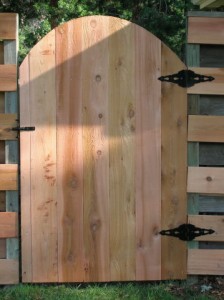The cold reality of your gate
 Every day, we go through dozens of doors without giving it a second thought. We just don’t realize the precision that goes into a door and jamb. Isn’t it amazing how the strike hits the strike plate each and every time? Ok, not that amazing.
Every day, we go through dozens of doors without giving it a second thought. We just don’t realize the precision that goes into a door and jamb. Isn’t it amazing how the strike hits the strike plate each and every time? Ok, not that amazing.
The cold reality is that your gates are not doors. Gates get out of adjustment and will not properly close. Why? A door is set into a jamb that completely surrounds the door. When the jamb moves the door moves in unison. Gates are set with two independent gate posts on opposite sides of your gate opening. Gate posts are subject to settling of unsettled soil, frost, extreme change in temperatures and exposure to the sun. All of these conditions will cause the gate posts to change or move. Even the slightest change in vertical or horizontal position of the hinge post will result in an exponential movement of the latch hasp on the gate. Bottom line, your gate won’t latch because the latch hasp does not align with the latch receiver on the gate post.
What can you do? A standard drop fork latch will not be impacted by movement in your gate posts. These are the latches that look like two prong pitch forks that move up and down. These are common on chain link and ornamental fencing. If you have this type of latch; you should be fine. Latches that use a horizontal rod that strikes or falls into a receiver when the gate is closed; these latches will require adjustment. Latches that look like a standard door lock assembly; these will require adjustment. If you have either of these type of latching /locking mechanisms; you should request four way adjustable hinges. These are hinges that adjust up and down and in and out. With these hinges, you will be able to adjust your gate to changing conditions.
If that sounds like too much to figure-out; you should ask your salesman “What do I do if my gate does not shut?” This should prompt your fence salesman to provide you with some guarantees and options.
